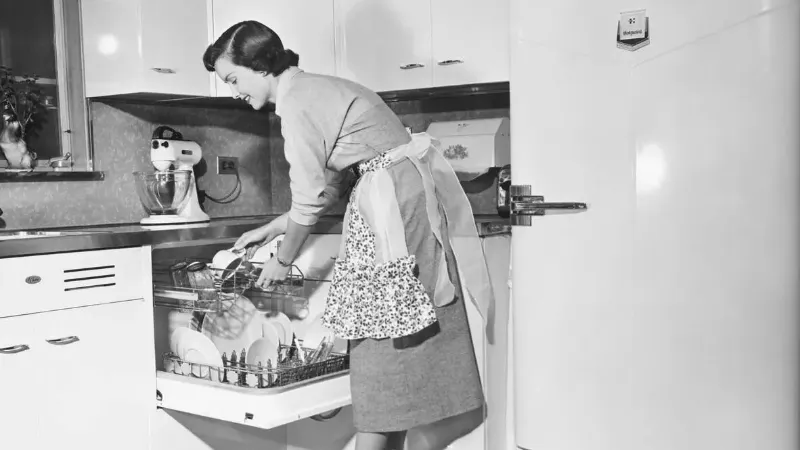We are aware of where to put dirty dishes in the dishwasher. It does a fantastic job cleaning a lot of kitchen cutlery as well as dishes. However, few people are aware of how such a fantastic invention was created or how the concept originated. Who invented the dishwasher?
The first patent for this device was issued to Joel Houghton in 1850. His invention was made of wood, so when it was turned on, water flowed through the wood plumbing and sprayed the dishes. Josephine Cochrane advanced Houghton’s invention, but it wasn’t until 1887 that she displayed it at the Chicago World’s Fair in 1893.
Please read on.
Why Were Dishwashers Invented?
To automate the cleaning of cookware, cutlery, and dishware, dishwashers were developed. This may be crucial in settings like restaurants and hotels where numerous items are used and cleaned on a daily basis. Dishwashers also reduce the likelihood of breakage or chipping to the items from manual washing.
There are many reasons why dishwashers were created and rose to popularity. A lot of different items can be washed, to start. As they are not handled manually, it also safeguards the goods from harm. Finally, it is possible to dry items in dishwashers.
Automates Dishwashing Process
Because they automate the laborious process of washing dishes, cookware, and cutlery, dishwashers are a common household appliance.
Dishwashers are particularly useful in commercial settings where a lot of items need to be cleaned. Dishwashers are commonly used in hotels, restaurants, and mess halls. Dishwashers reduce the amount of time needed to clean dishes at home while also conserving water.
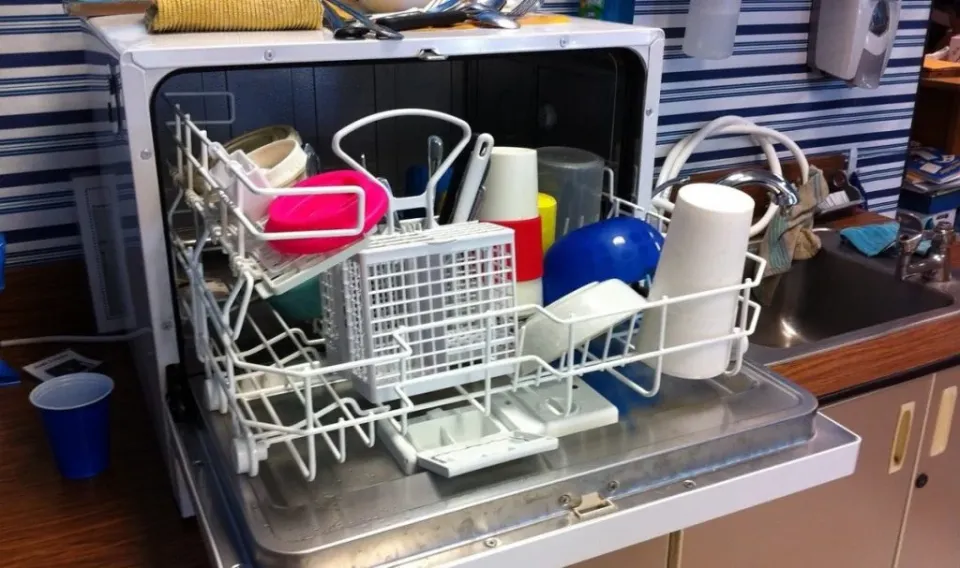
Protects the Wares
When washing dishes by hand, breakage is one of the biggest dangers. This is due to the fact that china, in many ways, is a delicate object, and manually clearing china and goods frequently requires scrubbing.
Detergent also makes the surface of the china slick, which increases the likelihood of slipping. Additionally, the china could bang against the sink or against one another, chipping.
Because the china only needs to sit on the tray, there is less chance of breakage or chipping when using a dishwasher. In order to clean it, the machine simultaneously sprays hot water and detergent.
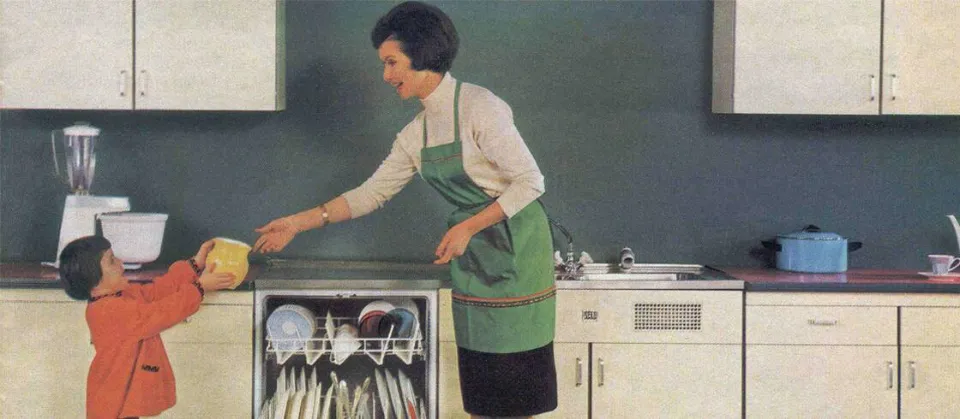
Faster Drying
Typically, manual dishwashing dries its products by dripping water on them or wiping them with a dry cloth. After that, the wares are placed on their racks. Because of this, cleaning the goods requires more work and time.
Drying the items after washing them inside the dishwasher solves the issue. The dishwasher’s racks can serve as a dish rack after they have dried, holding on to the items until they are needed. Time is effectively saved in this way.
How Were Dishwashers Invented?
Before the modern dishwasher was created, there were many different iterations and attempts. Since they aren’t powered by electricity, the older dishwashers still use scrubbing and may require manual operation. It took until Josephine Cochcran to develop a good dishwasher that we may recognize today in 1886.
Typically, inventions do not occur suddenly or by themselves. The problem was addressed by earlier inventions before the one that led to the invention. After that, the innovations were refined until the ideal response materialized.
You can assume the same with dishwashers. Before Mrs., there had been the development of two notable dishwashers. Although they were not as successful, Cochran’s paved the way and may have served as an inspiration for modern dishwashers.
Joel Hughton
The first person to attempt automating dishwashing was Joel Houghton. He created a hand-operated dishwasher in 1850. He created a large wooden box that sprays water onto unwashed dishes.
A manual, hand-turned wheel controls the splashing motion. Scrubbers were also a part of the machine. The design, which Joel patented, might have worked back when electricity hadn’t yet been invented.
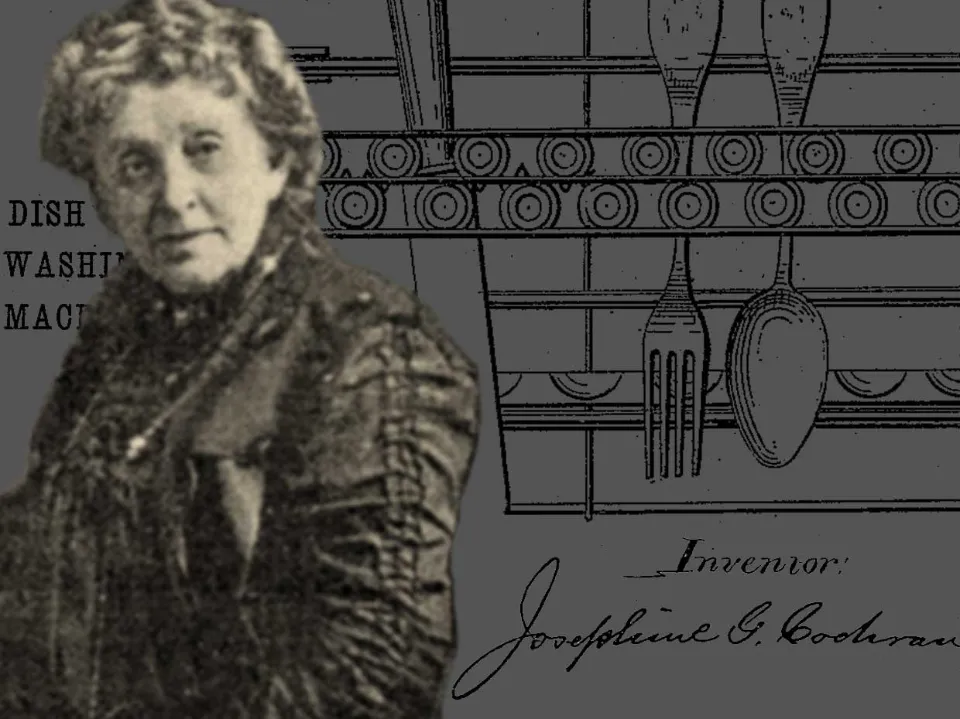
L.A. Alexander
Dishwasher inventor L.A. Alexander borrowed Houghton’s concept and expanded on it, not inventing his own version of the appliance. L A Alexander tries to see if he can move the goods rather than sprinkling water on the dishes.
He included a device that, starting in 1860, allowed users to spin a rack of dishes through a tub of water. This calls for you to load your dirty dishes onto a rack, add water and soap to the machine, and then manually turn the rack to let it pass through the soapy water.
Not a bad idea, especially in the days before electricity. But Josephine Cochran was required to complete the task.
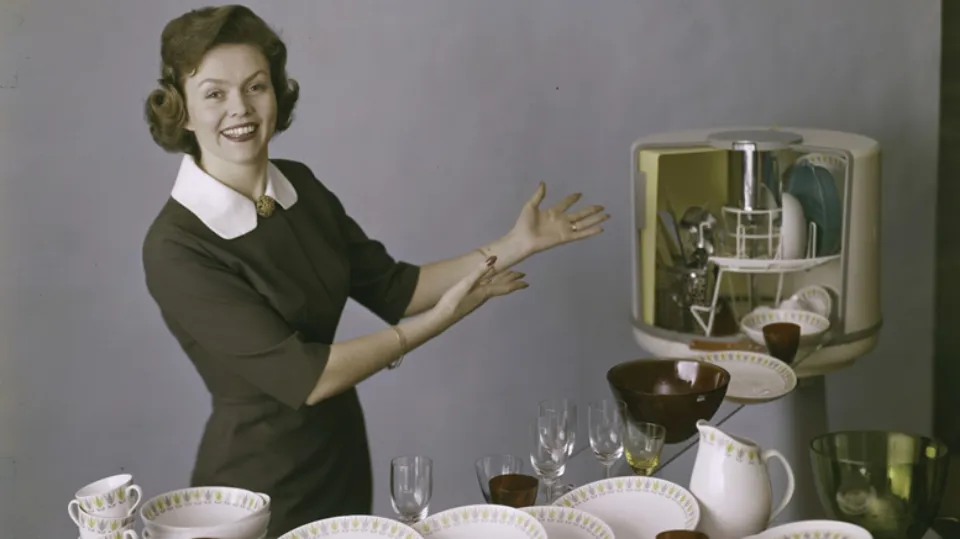
Size and Capacity of Dishwashers
Dishwashers that are installed into typical kitchen cabinets are typically 60 cm (Europe) wide by 24 inches (US) deep, and the majority of dishwashers must be installed into holes that are at least 86 cm (Europe) tall by 34 inches (US).
Portable dishwashers exist in 45 and 60 cm (With casters and attached countertops, they come in 18 and 24 inch (US) or European (European) widths.
Dishwashers may come in standard or tall tub designs; standard tub dishwashers have a service kickplate beneath the dishwasher door that allows for simpler maintenance and installation, but tall tub dishwashers have approximately 20% more capacity and better sound dampening from having a continuous front door.
The international standard for the capacity of a dishwasher is expressed as standard place settings. The plate-per-hour rating of commercial dishwashers.
Based on identical-sized standard plates, the rating was created. Since commercial glass washers are built on standard glasses, typically pint glasses, the same can be said about them.
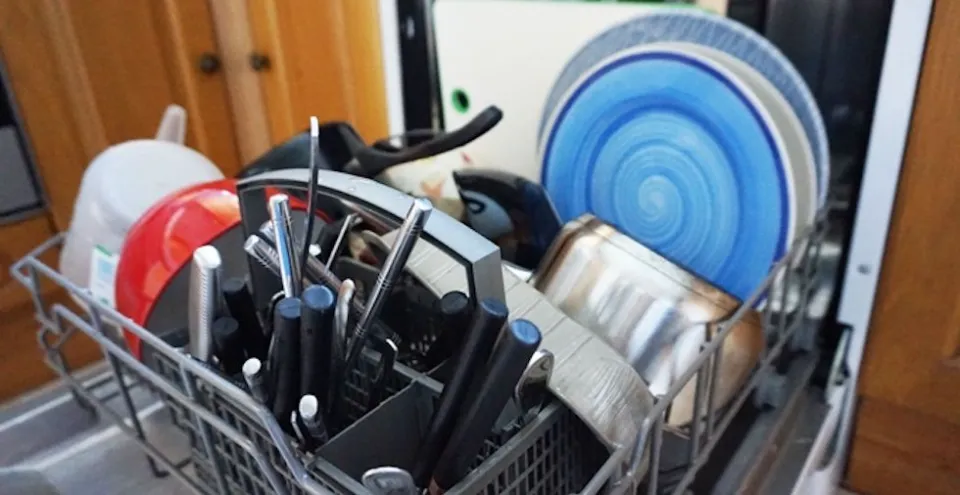
Layout of Dishwashers
Present-day machines feature a drop-down front panel door that allows access to the interior, which usually contains two or sometimes three pull-out racks; racks can also be referred to as “baskets”. Older American models from the 1950s rolled out the entire tub when the machine latch was opened and the user had to reach deep into the compartment for some items when loading or unloading washable items from the top.
A tub-style dishwasher was available from Youngstown Kitchens, which also produced complete kitchen cabinets and sinks. It was combined with a standard kitchen sink as a single unit.
Today’s machines typically allow you to put dishes, silverware, tall items, and cooking utensils in the lower rack. Glassware, cups, and saucers are placed in the upper rack.
Dishwashers made by the Maytag Corporation from the late 1960s to the early 1990s are one notable exception. These machines were designed for loading glassware, cups, and saucers in the lower rack, while plates, silverware, and tall items were placed into the upper rack. Because of its distinctive design, it was possible to load pots, pans, and dishes more easily and with greater capacity.
Today, “dish drawer” models eliminates the inconvenience of the long reach that was necessary with older full-depth models. “Cutlery baskets” are also common. A drawer dishwasher is a type of dishwasher in which the baskets slide out with the door in a similar way to a drawer filing cabinet, and each drawer in a double-drawer model is capable of functioning independently of the other. Fisher & Paykel first introduced the drawer dishwasher in 1997.
The inside of a dishwasher in the North American market is either stainless steel or plastic. Stainless steel tubs resist hard water and preserve heat to dry dishes more quickly. They also come at a premium price.
In older models, the tubs were baked enamel, while some used a vinyl coating that was bonded to a steel tub to protect it from acidic foods and to reduce some noise. Even the most affordable dishwasher models made in Europe come standard with a stainless steel interior. A built-in water softener operates in the same manner.

Washing Elements of Dishwashers
Nearly all European dishwashers have two or three spray arms that are fed from the dishwasher’s bottom and back wall, leaving both racks free to move about. Such models tend to use inline water heaters, removing the need for exposed elements in the base of the machine that can melt plastic items near to them.
Many North American dishwashers tend to use exposed elements in the base of the dishwasher. A wash tube, also known as a wash-tower, is used by some North American dishwashers, primarily those created by General Electric, to direct water from the bottom of the dishwasher to the top dish rack.
Some dishwashers use a tube attached to the top rack that connects to a water source at the back of the dishwasher and directs water to a second wash arm beneath the upper rack. These models include many Whirlpool and KitchenAid models. The bottom rack may now be used completely. Modern Frigidaire dishwashers allow for full use of the bottom rack once more (though they do require that a small funnel on the top rack be kept clear) by shooting a jet of water from the top of the washer down into the upper wash arm.
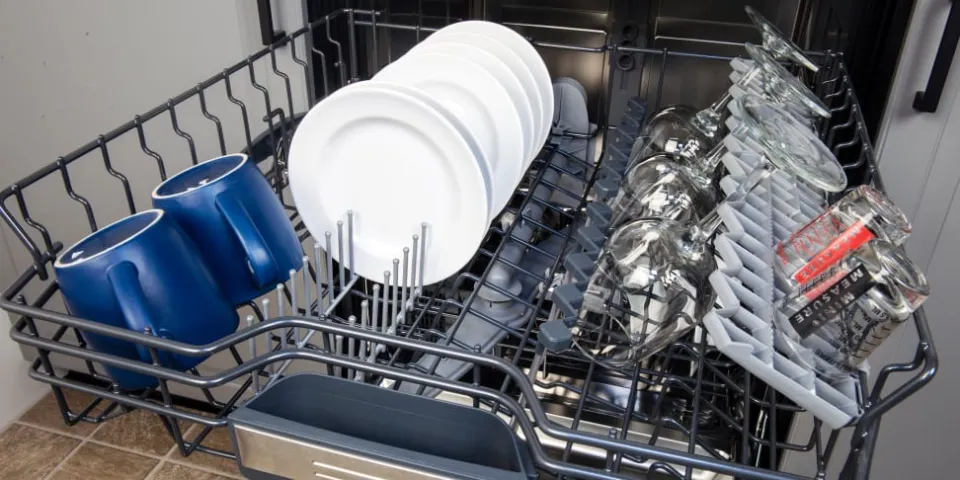
Features of Dishwashers
Hard food disposal units, which operate like garbage (waste) disposal units and remove large pieces of food waste from the wash water, are frequently included with mid- to higher-end North American dishwashers.
Bosch, a German company, is one that is well-known for leaving out hard food disposals. Bosch does this, though, to lessen noise. Even without integrated waste disposal units, pre-rinsing is not required if the larger pieces of food waste are removed before placing them in the dishwasher.
Many new dishwashers feature microprocessor-controlled, sensor-assisted wash cycles that adjust the wash duration to the number of dirty dishes (sensed by changes in water temperature) or the amount of dirt in the rinse water (sensed chemically or optically). If a user runs a partial load, this can save water and energy.
In such dishwashers, a microprocessor takes the place of the electromechanical rotary switch frequently used to regulate the washing cycle, but most sensors and valves are still necessary. However, most microprocessor-controlled dishwashers do not need pressure switches because they sense water resistance using the motor and occasionally a rotational position sensor (some dishwashers use a pressure switch and flow meter).
It knows it has the right amount of water when it detects no cavitation. The detergent door is opened during the wash cycle by a wax motor or a bimetal switch.
Some dishwashers include a child-lockout feature to prevent accidentally starting or stopping the wash cycle. When a wash cycle is in progress, a child lock can occasionally be added to keep small children from opening the door. Using hot water and potent detergents during the wash cycle helps to avoid accidents.
- Suggested reading: How long do dishwashers last? This guide will tell you how to prolong the life of your dishwasher and keep it in good working condition.

Below is a video about the History and Future of Dishwashers:
FAQs
How Did People Wash Dishes before Dishwasher?
For convenience, the cook or servant often washed dishes on a wood bench by the well and pulled handfuls of soapwort planted nearby to facilitate removal of grease. Cloth was used both for cooking and, along with scouring sand or ashes and tubs, for cleaning the kitchenware.
Did a Man Or Woman Invent Dishwasher?
“If nobody else is going to invent a dishwashing machine, I’ll do it myself.” Josephine Cochran as a young woman. She married William A. Cochran became a widower shortly after having the idea for a dishwasher in 1883, when he was 19 years old.
Summary: Who Invented the Dishwasher
It took 160 years to create the first dishwasher ever. It sparked a revolution that gave rise to the modern, stylish digital dishwashers. Dishwashers of the present day are streamlined and have elegant lines in addition to impressive functionality. This appliance has a long and, to put it mildly, impressive history.
If you have any questions, please leave a comment. My Prime Home tries to give you the best home improvement information. Don’t forget to share the post. Thank you for reading.
You may want to know:
